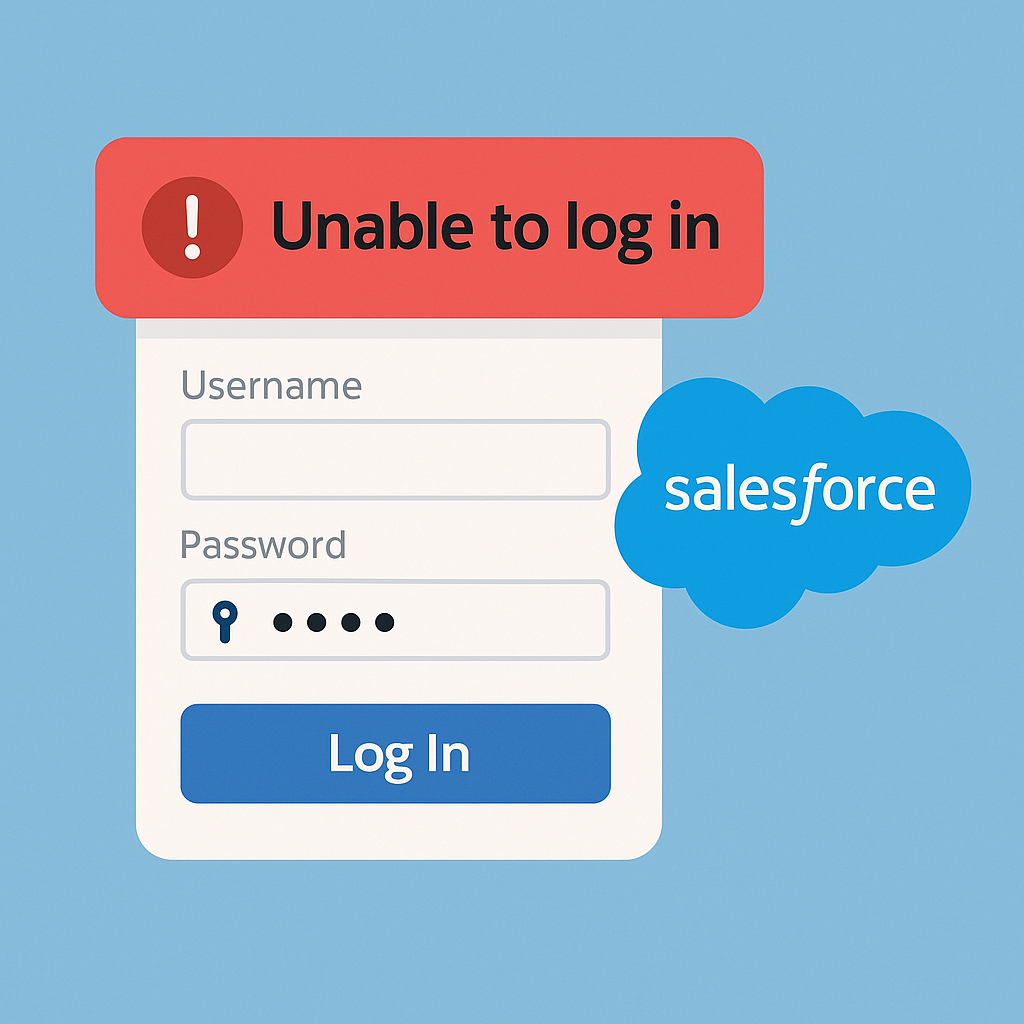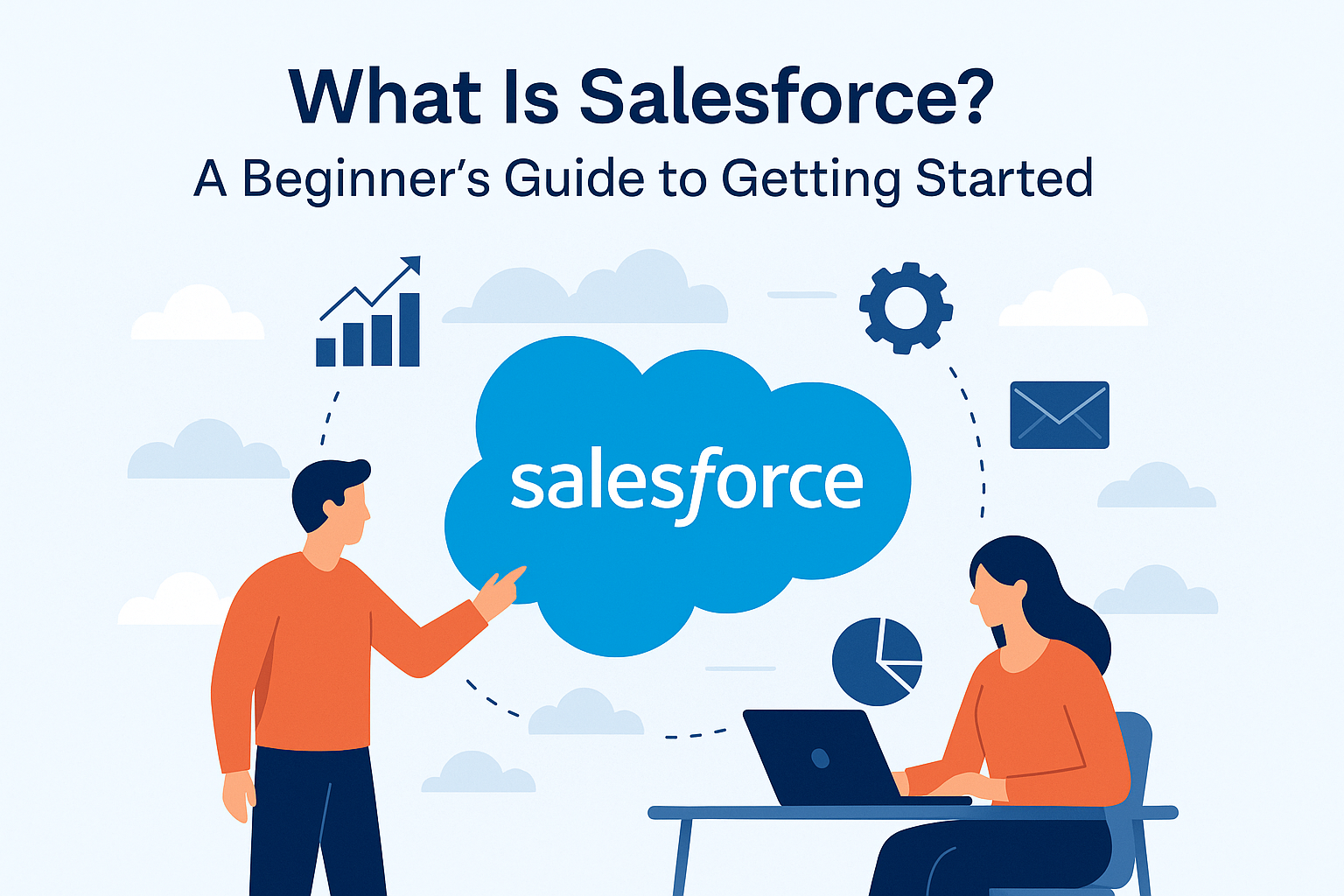Interview Questions and Answers for a Junior Salesforce Developer
Here are 20 Interview Questions and Answers for a Junior Salesforce Developer role.

- In your own words, what is Salesforce, and why do companies choose to use it?
Salesforce is a cloud-based Customer Relationship Management (CRM) platform that helps businesses manage sales, service, marketing, and more. Companies use it because it’s scalable, highly customizable, and supports automation, analytics, and integration across departments—all from one place.
- Which Salesforce products have you worked with, and what have you found them useful for?
I’ve worked with Sales Cloud for managing leads and opportunities, Service Cloud for customer support, and Marketing Cloud for campaign automation. Each one streamlines its respective function and provides strong analytics and automation tools.
- What exactly is Apex, and how have you used it in your projects?
Apex is Salesforce’s object-oriented programming language, similar to Java. I use it to write business logic like triggers, batch jobs, custom web services, and scheduled jobs when declarative tools aren’t enough.
- If you’re tasked with migrating data into Salesforce, how would you go about it?
I’d start by analyzing the data model and dependencies. Then, I’d use tools like Data Loader or Data Import Wizard for bulk imports. For complex transformations, I’ve used ETL tools like Informatica or Talend. I also ensure data integrity with validation and deduplication steps.
- Can you break down the difference between SOQL and SOSL and when you’d use each?
SOQL (Salesforce Object Query Language) fetches records from a single object or related objects using structured queries. SOSL (Salesforce Object Search Language) is used for full-text searches across multiple objects. I use SOQL when I know exactly where the data is, and SOSL when searching across the platform.
- Have you built anything using Visualforce? Tell us about a real-world example.
Yes, I created a custom invoice generator using Visualforce and Apex. It pulled data from multiple objects, displayed it in a printable layout, and generated PDFs on demand.
- What are some common limitations or quirks of Apex that developers should watch out for?
Governor limits are the biggest challenge—like limits on SOQL queries, DML operations, and CPU time. Also, recursion and bulkification need to be managed carefully to avoid runtime errors.
- What is a trigger in Salesforce, and when would you use one?
A trigger is a piece of Apex code that runs before or after a record is inserted, updated, deleted, or undeleted. I use them for enforcing complex business logic that can’t be handled through standard configuration.
- How do you maintain high code quality in your Salesforce development work?
I follow best practices like writing bulk-safe and modular code, using trigger frameworks, writing unit tests with high coverage, conducting peer code reviews, and leveraging tools like PMD and SonarQube for static code analysis.
- What’s a Sandbox in Salesforce, and how do you typically use it during development or testing?
A Sandbox is a replica of the production environment used for development, testing, and training without affecting live data. I typically use Developer Sandboxes for coding and Full/Partial Sandboxes for UAT and integration testing.
- Can you walk me through what a workflow rule does and when it’s useful?
A workflow rule automates actions like field updates, email alerts, or task creation based on record criteria. It’s useful for simple automation, though now Flow is recommended for more complex logic.
- What steps do you take when you’re debugging an issue in Salesforce?
I use debug logs, the Developer Console, and system debug statements to trace issues. I isolate the problem, reproduce it in a Sandbox, and use checkpoints or logs to identify the root cause.
- How would you explain custom objects and custom fields to someone new to Salesforce?
Custom objects are like custom database tables in Salesforce created to store data unique to your business. Custom fields are columns in those tables. For example, a “Project” object with fields like “Start Date” and “Budget.”
- Tell me about a tough Salesforce project you worked on. What made it challenging?
I worked on a complex territory management revamp where we had to reassign accounts dynamically based on region and performance. The challenge was in performance optimization and preventing recursive triggers during mass updates.
- Salesforce evolves constantly—how do you keep up with the latest features and updates?
I follow release notes every season (Spring, Summer, Winter), attend webinars and Salesforce Live events, and actively engage on Trailhead and the Salesforce Developer forums.
- What is batch Apex, and when is it the right solution?
Batch Apex allows processing of large datasets asynchronously in chunks. I use it when data volumes exceed the governor limits of synchronous transactions—like cleansing millions of records or performing scheduled updates.
- How does the MVC (Model-View-Controller) framework apply in Salesforce development?
Salesforce follows MVC where the Model is the data (objects/records), the View is the UI (Visualforce, Lightning), and the Controller is the business logic (Apex classes/controllers). It helps in separating concerns and organizing code effectively.
- Have you built with Lightning Components? Describe a scenario where they came in handy.
Yes, I built a custom quote builder using Lightning Components where users could dynamically add products, apply discounts, and preview the total in real time. It greatly improved the sales team’s efficiency.
- When juggling multiple Salesforce tasks or projects, how do you manage your time effectively?
I prioritize based on business impact, use tools like Jira or Trello for task tracking, block out focus time for deep work, and regularly sync with stakeholders to adjust timelines when needed.
- When a new Salesforce product or feature comes out, how do you go about learning it quickly?
I explore it hands-on in a dev org, go through the relevant Trailhead modules, check out use cases from the Salesforce community, and apply it to a small internal project or prototype to solidify understanding.


